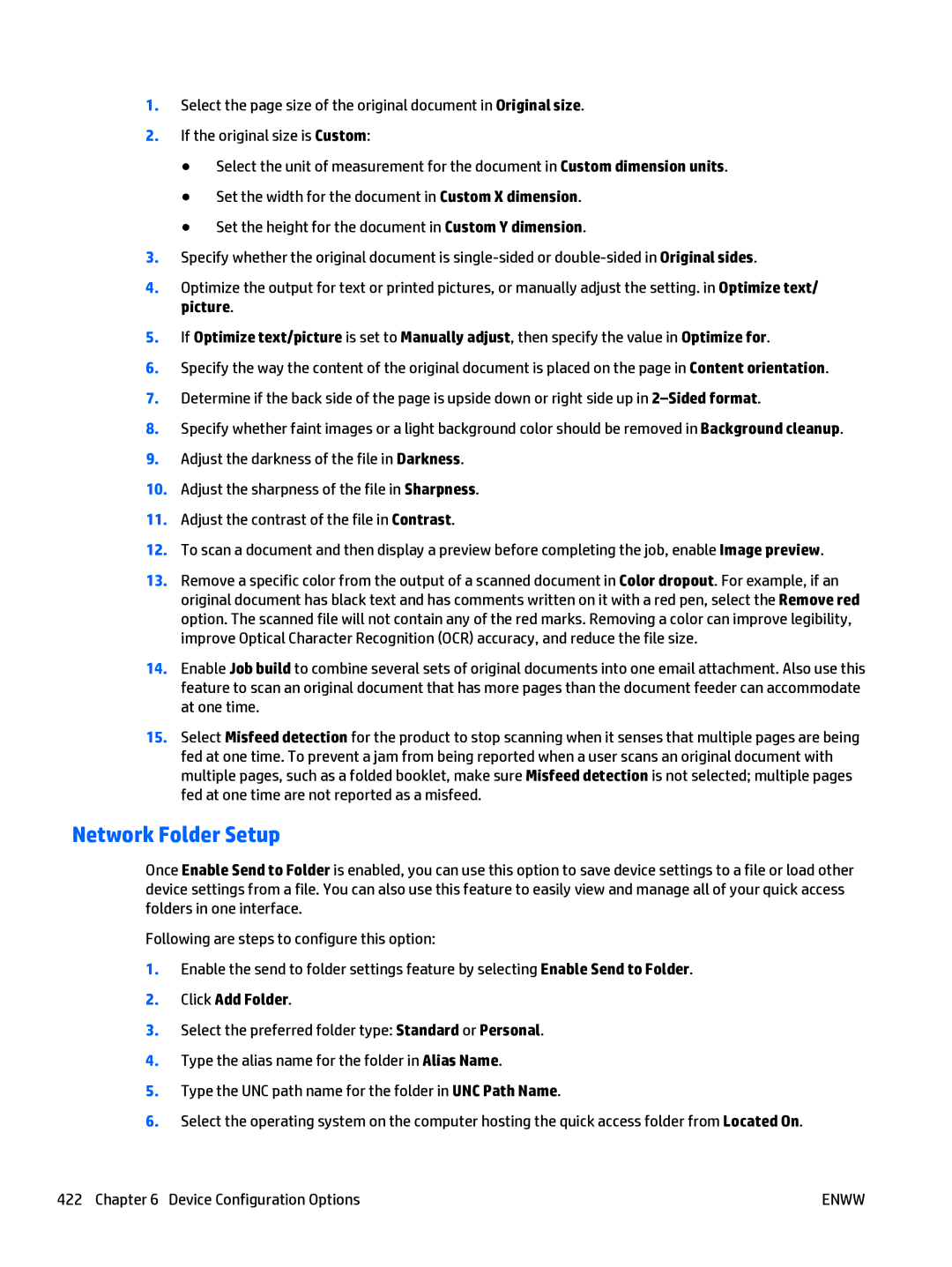1.Select the page size of the original document in Original size.
2.If the original size is Custom:
●Select the unit of measurement for the document in Custom dimension units.
●Set the width for the document in Custom X dimension.
●Set the height for the document in Custom Y dimension.
3.Specify whether the original document is
4.Optimize the output for text or printed pictures, or manually adjust the setting. in Optimize text/ picture.
5.If Optimize text/picture is set to Manually adjust, then specify the value in Optimize for.
6.Specify the way the content of the original document is placed on the page in Content orientation.
7.Determine if the back side of the page is upside down or right side up in
8.Specify whether faint images or a light background color should be removed in Background cleanup.
9.Adjust the darkness of the file in Darkness.
10.Adjust the sharpness of the file in Sharpness.
11.Adjust the contrast of the file in Contrast.
12.To scan a document and then display a preview before completing the job, enable Image preview.
13.Remove a specific color from the output of a scanned document in Color dropout. For example, if an original document has black text and has comments written on it with a red pen, select the Remove red option. The scanned file will not contain any of the red marks. Removing a color can improve legibility, improve Optical Character Recognition (OCR) accuracy, and reduce the file size.
14.Enable Job build to combine several sets of original documents into one email attachment. Also use this feature to scan an original document that has more pages than the document feeder can accommodate at one time.
15.Select Misfeed detection for the product to stop scanning when it senses that multiple pages are being fed at one time. To prevent a jam from being reported when a user scans an original document with multiple pages, such as a folded booklet, make sure Misfeed detection is not selected; multiple pages fed at one time are not reported as a misfeed.
Network Folder Setup
Once Enable Send to Folder is enabled, you can use this option to save device settings to a file or load other device settings from a file. You can also use this feature to easily view and manage all of your quick access folders in one interface.
Following are steps to configure this option:
1.Enable the send to folder settings feature by selecting Enable Send to Folder.
2.Click Add Folder.
3.Select the preferred folder type: Standard or Personal.
4.Type the alias name for the folder in Alias Name.
5.Type the UNC path name for the folder in UNC Path Name.
6.Select the operating system on the computer hosting the quick access folder from Located On.
422 Chapter 6 Device Configuration Options | ENWW |
